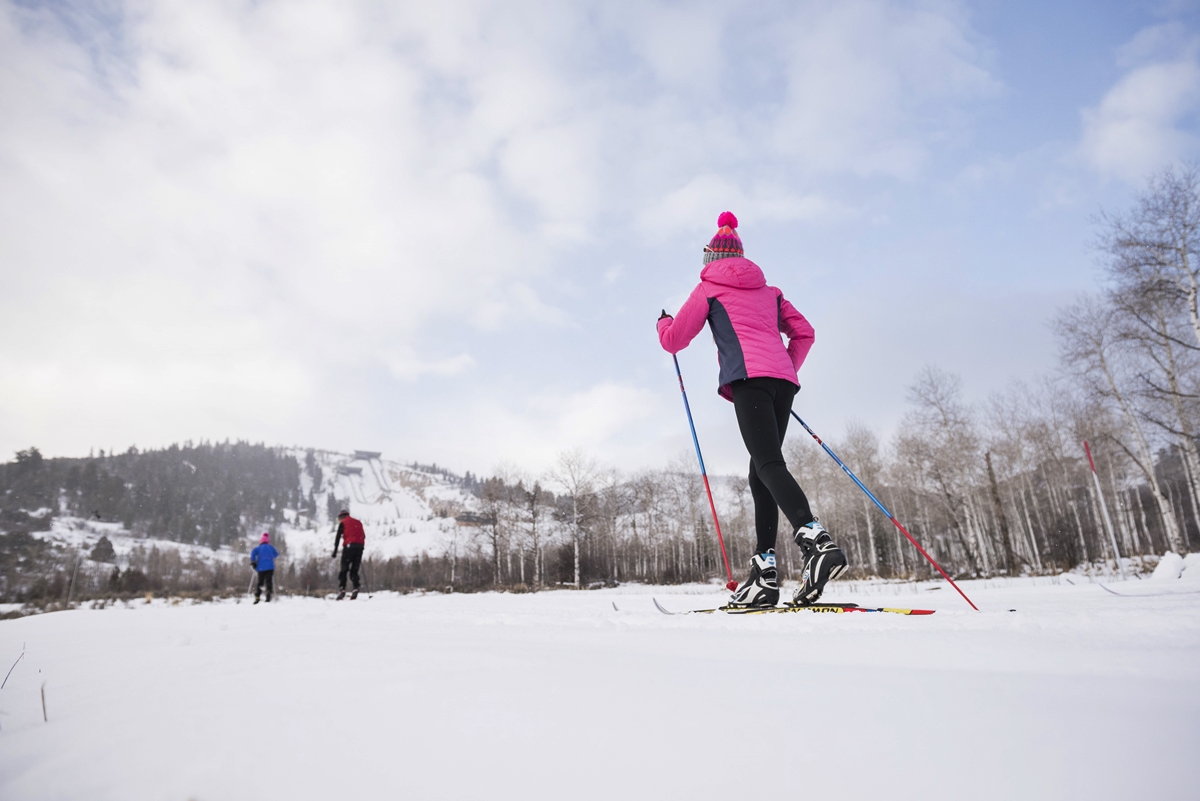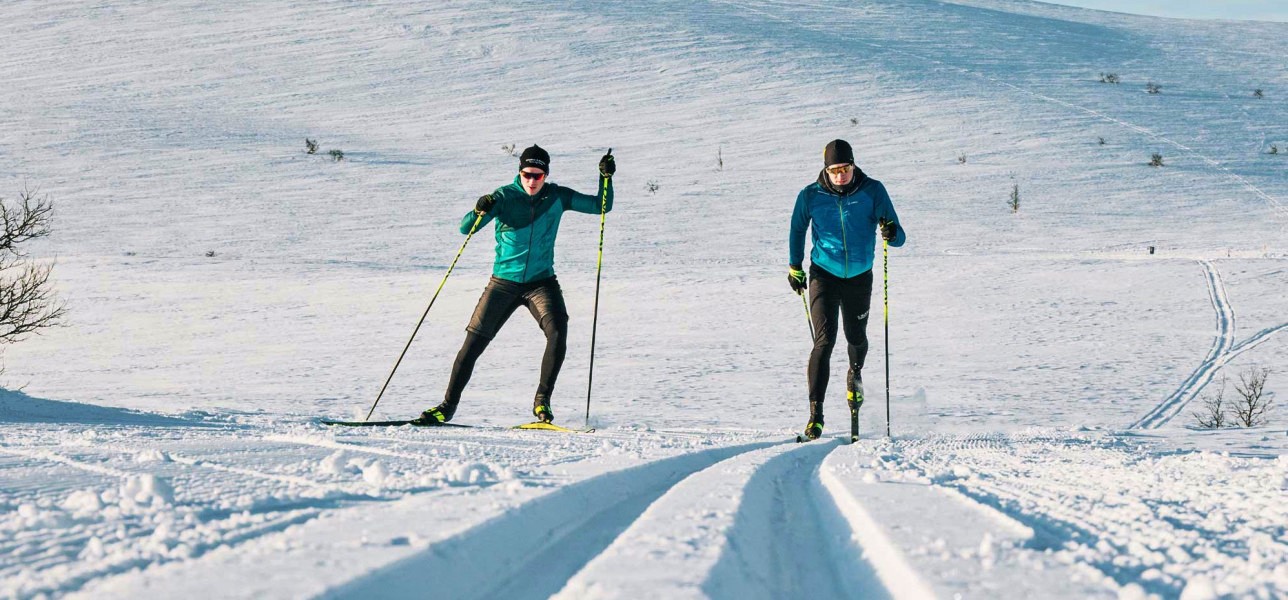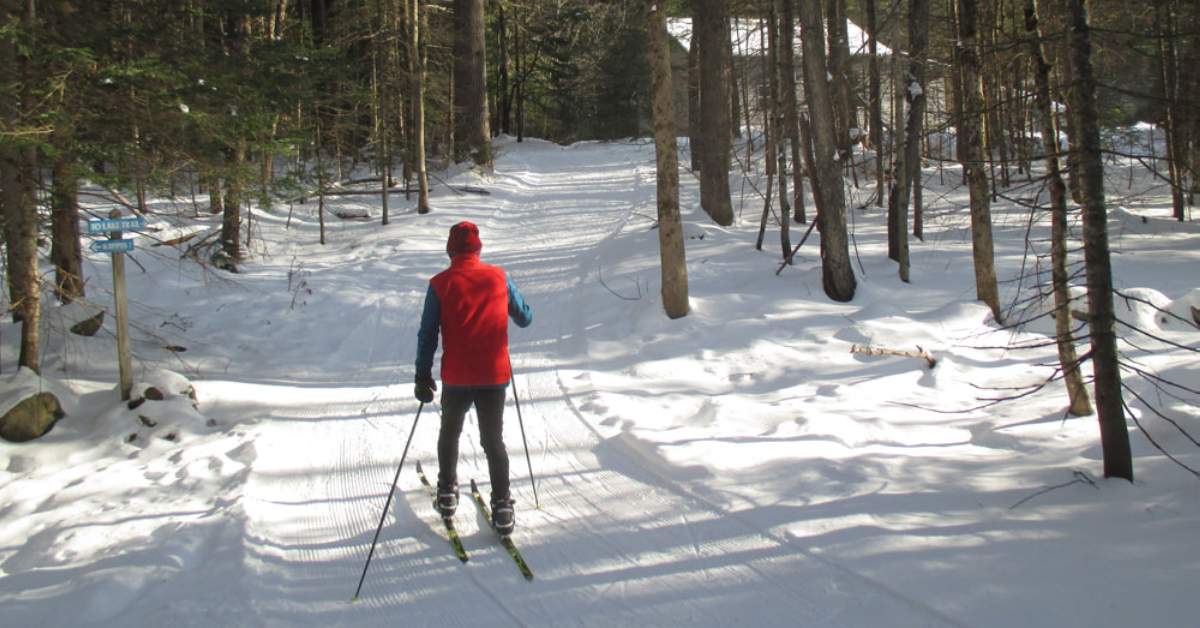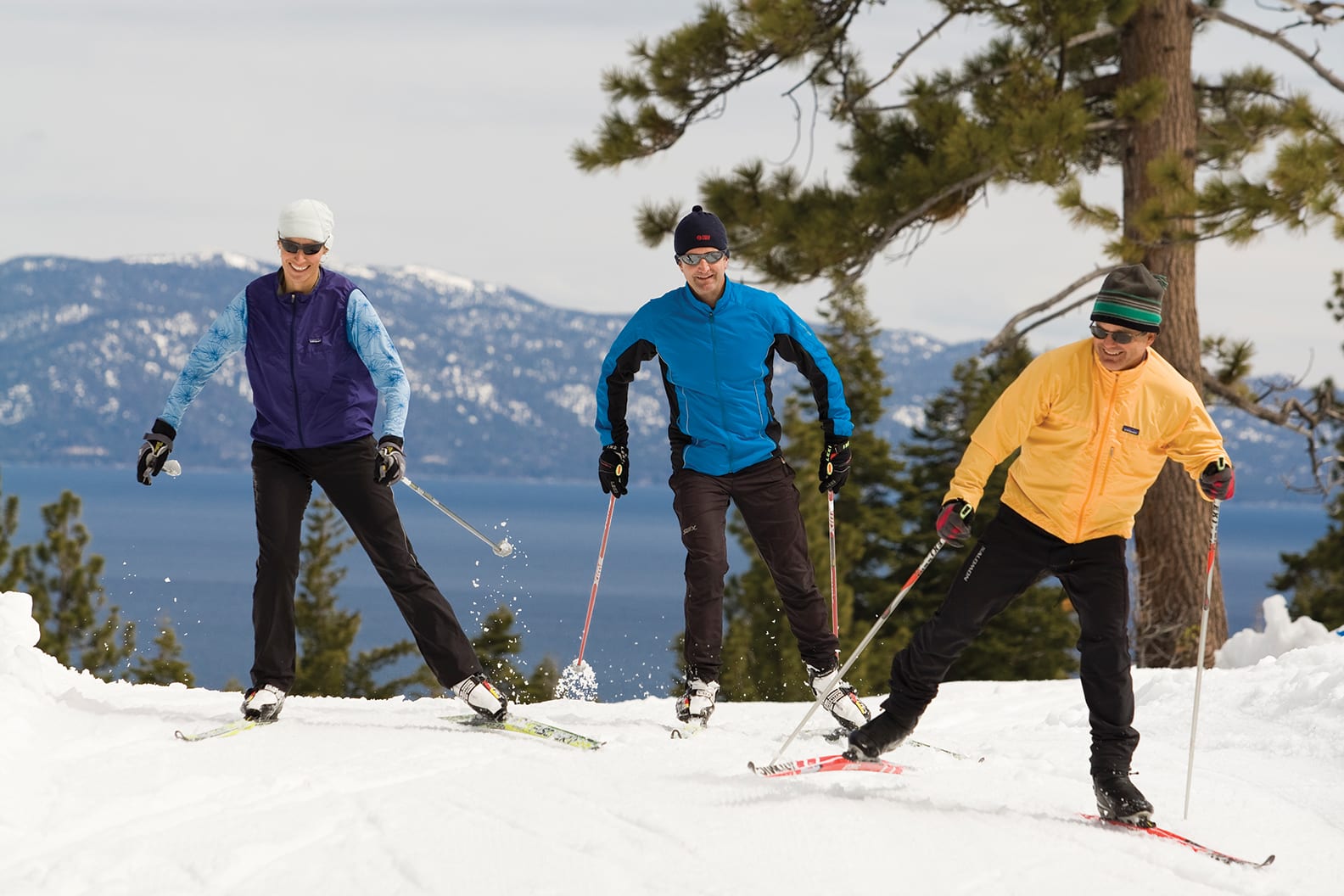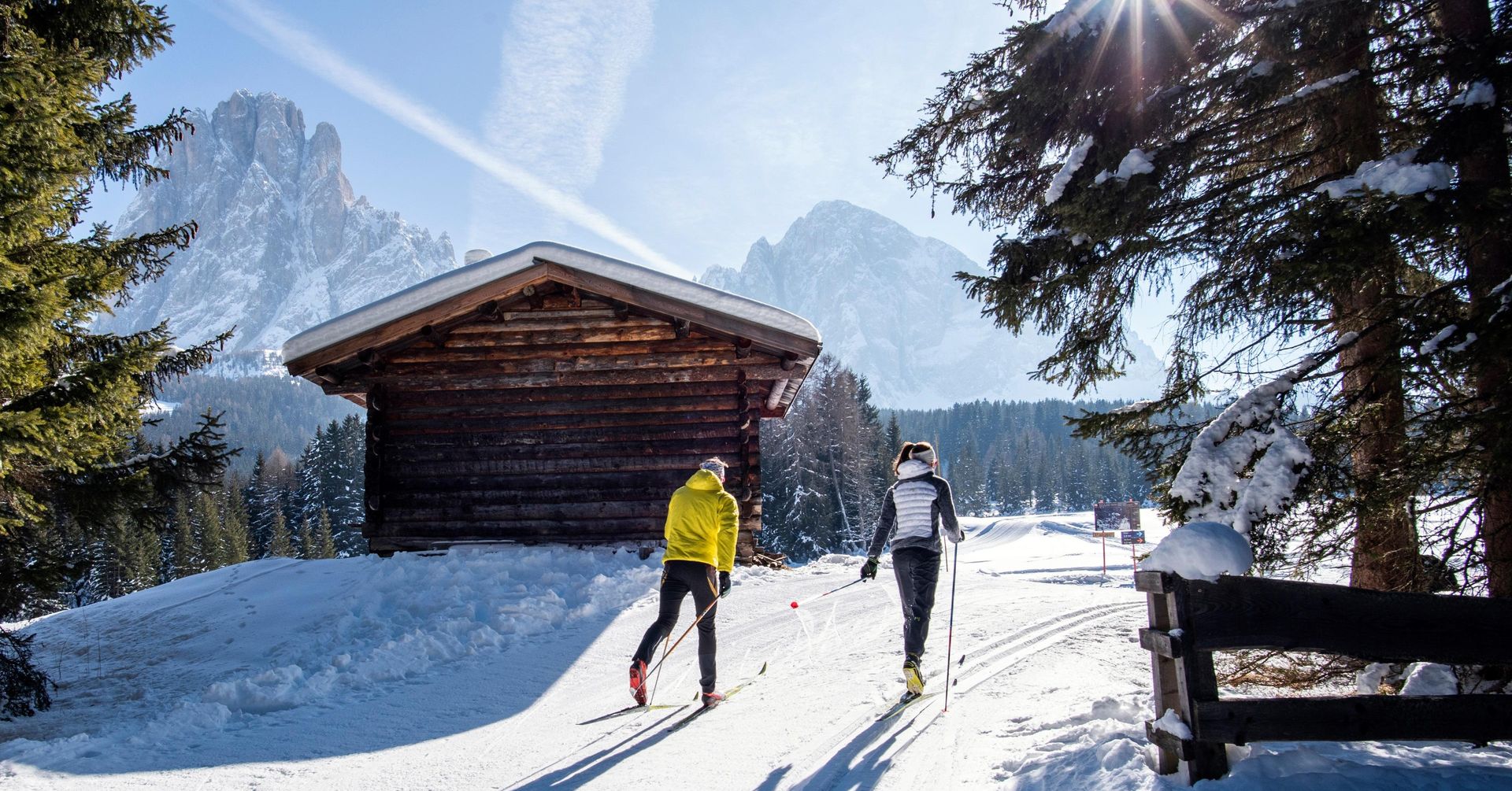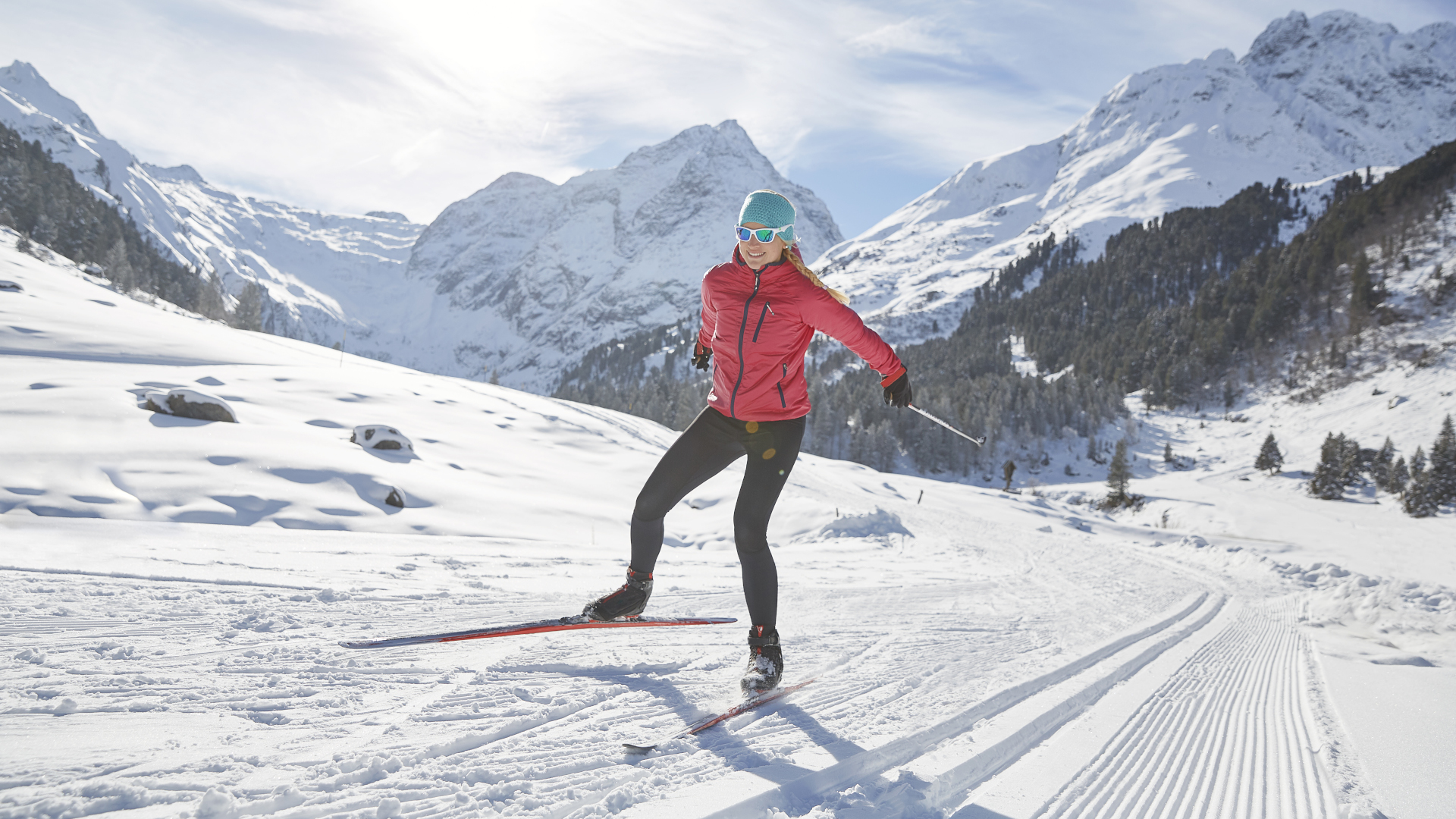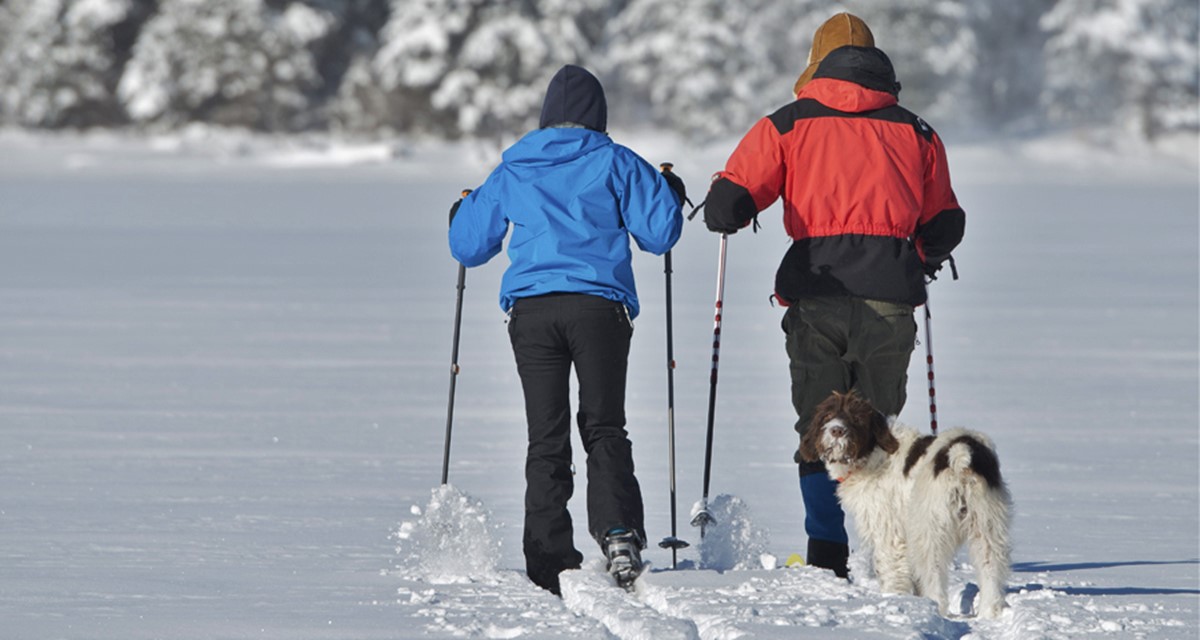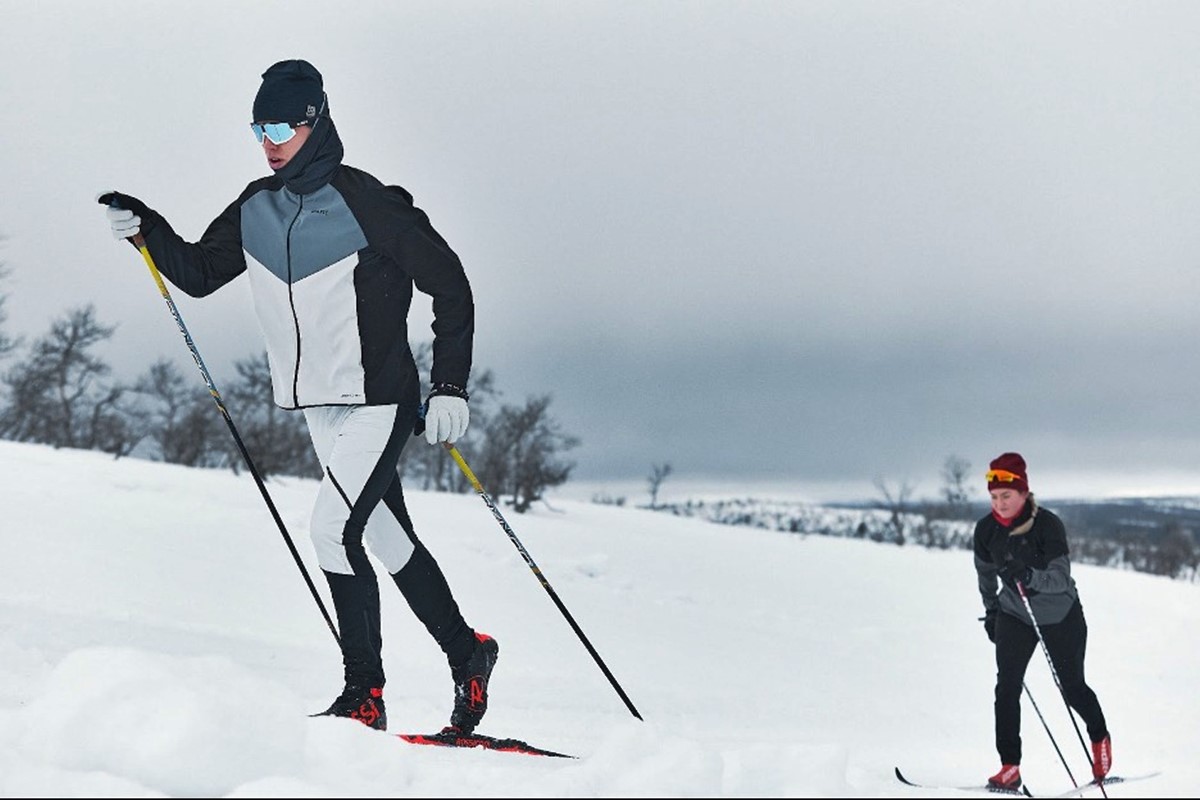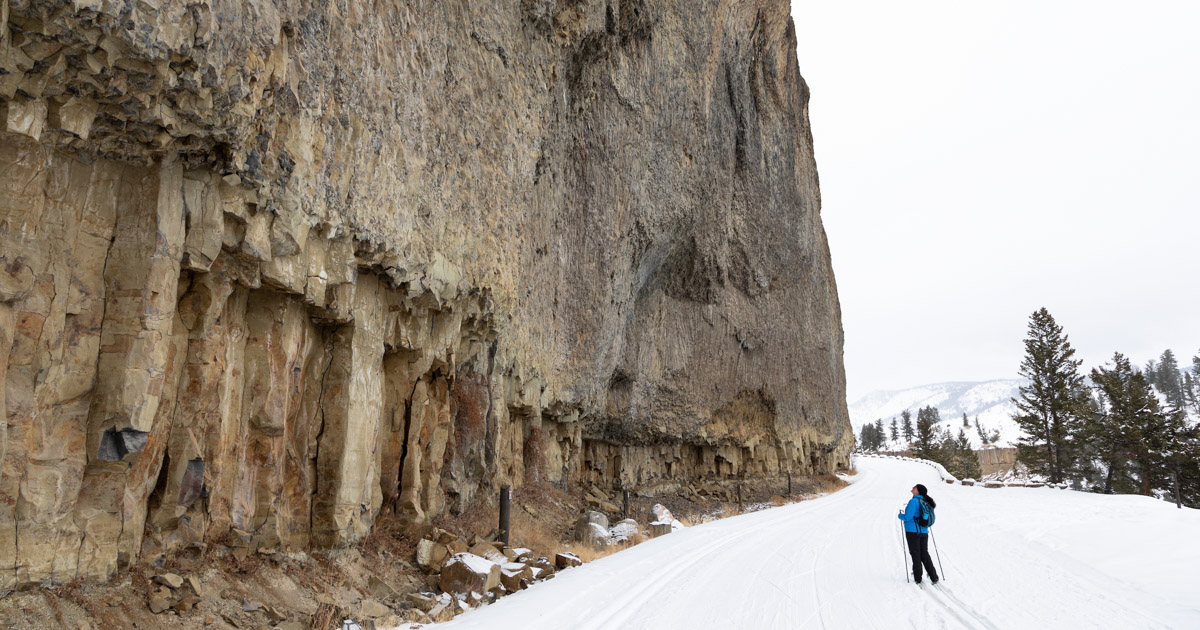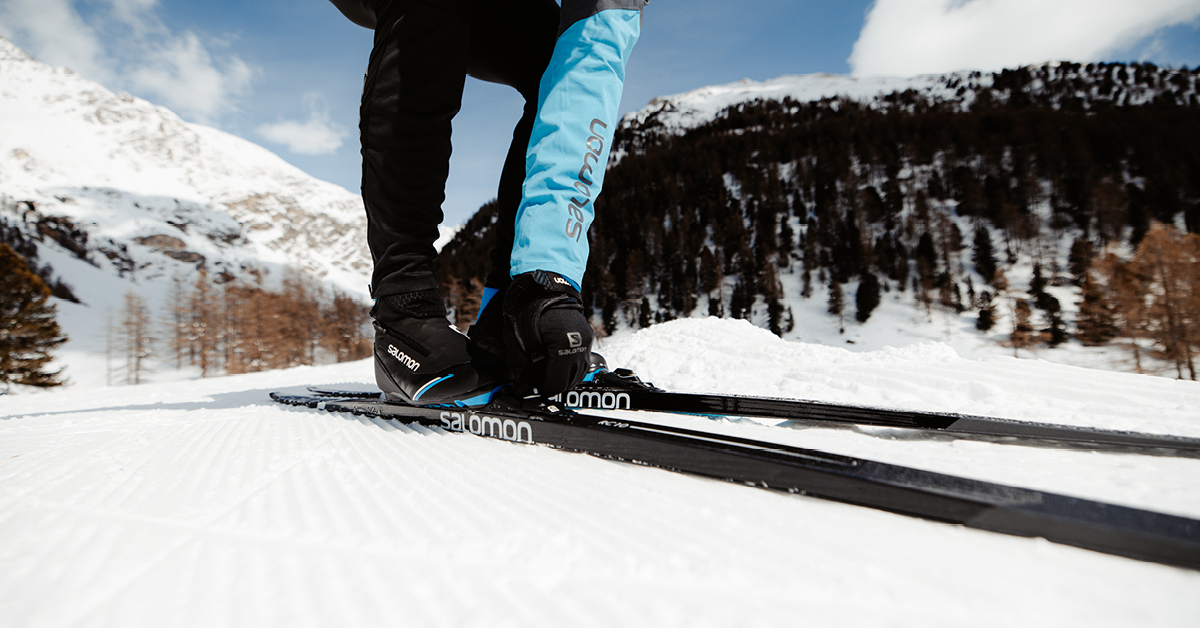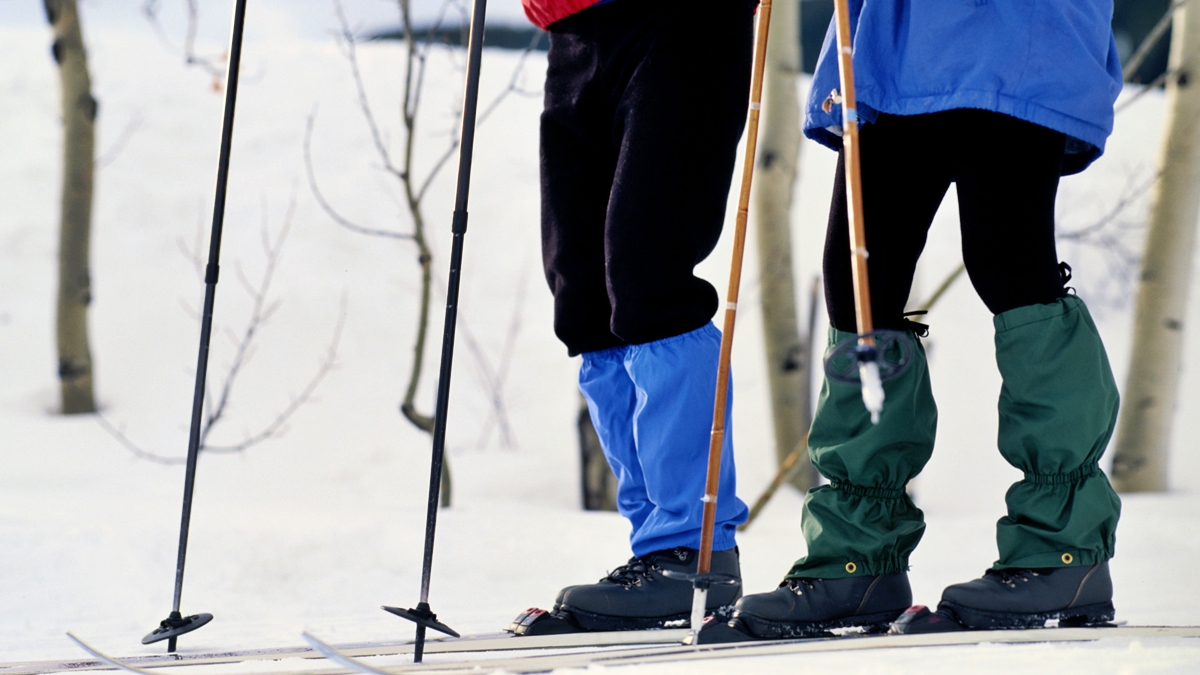

Featured
How Should Cross Country Ski Boots Fit
Modified: January 22, 2024
Learn how cross country ski boots should fit to ensure comfort and optimal performance. Get featured tips from experts to improve your skiing experience.
Introduction
Cross country skiing is a popular winter activity that combines the thrill of gliding over snowy landscapes with a great cardiovascular workout. Whether you’re a seasoned skier or a beginner, one of the most important factors in ensuring a comfortable and enjoyable skiing experience is wearing properly fitting cross country ski boots.
Having boots that fit well not only enhances your performance on the trails but also minimizes the risk of discomfort, blisters, and injuries. In this article, we will explore the importance of properly fitting cross country ski boots and provide you with guidelines on how to achieve the perfect fit.
When it comes to cross country skiing, the right fit is crucial. Ill-fitting boots can lead to a loss of control, reduced power transfer, and decreased efficiency, which can significantly impact your performance and enjoyment on the snow. Additionally, poorly fitting boots can cause pain and discomfort, hindering your ability to fully enjoy your time on the trails.
Unfortunately, finding the ideal cross country ski boot fit can be a bit challenging. Unlike downhill ski boots, which are typically more rigid and provide greater support, cross country ski boots are designed to offer a balance between flexibility and stability. They need to provide enough support for efficient ski control while allowing the foot and ankle to move naturally.
To ensure a proper fit, various factors should be considered, including the length, width, ankle support, flex, toe box, heel cup fit, and lacing system of the boots. By paying attention to these elements and making necessary adjustments, you can achieve a personalized and comfortable fit that optimizes your performance and enjoyment out on the trails.
In the following sections, we will delve deeper into these aspects and provide practical guidelines for achieving the perfect fit in your cross country ski boots. Whether you’re buying new boots or trying to optimize the fit of your existing pair, this article will serve as a valuable resource to help you ski comfortably and confidently on your next adventure.
Importance of Properly Fitting Cross Country Ski Boots
Properly fitting cross country ski boots are essential for a variety of reasons. Here are some key reasons why achieving the right fit is crucial:
- Comfort: Wearing boots that fit well ensures optimal comfort throughout your skiing adventures. Ill-fitting boots can cause hot spots, blisters, and pressure points, leading to discomfort and a less enjoyable experience.
- Control and Performance: A snug and secure fit helps maintain better control over your skis. It enhances your ability to transfer power efficiently, allowing for smoother and more controlled skiing technique. This ultimately improves your overall performance on the trails.
- Stability: Well-fitting boots provide stability by supporting the ankle and foot. This stability is crucial for maintaining proper balance and control, especially when navigating challenging terrains or executing advanced ski maneuvers.
- Prevention of Injuries: Properly fitting boots reduce the risk of injuries by minimizing movements that could strain the feet, ankles, or lower legs. A secure fit helps prevent sprains, twists, and other common ski-related injuries.
- Energy Efficiency: Boots that fit well enable efficient power transfer from your body to the skis, reducing energy waste. This means you can ski longer distances with less effort, maximizing your endurance and enjoyment on the trails.
It is important to note that the consequences of wearing improperly fitting boots go beyond immediate discomfort. Over time, repeatedly using boots that don’t fit well can lead to chronic foot problems, such as bunions or metatarsalgia, which can significantly impact your skiing experience and overall foot health.
By prioritizing the proper fit of your cross country ski boots, you can enhance your overall skiing performance, increase comfort, and reduce the risk of injuries. In the following sections, we will explore the specific guidelines and factors to consider when evaluating and adjusting the fit of your boots.
Basic Guidelines for Cross Country Ski Boot Fit
When it comes to achieving the perfect fit for your cross country ski boots, there are some basic guidelines to keep in mind. These guidelines will help you determine the appropriate size and shape of the boots for your feet.
1. Go for a Snug Fit: Cross country ski boots should fit snugly but not be overly tight. Your feet should feel well-supported and secure within the boots. Avoid excessive heel movement or looseness in the forefoot area, as this can lead to discomfort and loss of control.
2. Consider Sizing: Cross country ski boots are typically sized in European sizes, and their fit can vary from brand to brand. It’s essential to measure your feet accurately and refer to size charts provided by the manufacturer. Remember that sizing can also be influenced by the thickness of your ski socks, so try on boots with the socks you plan to wear while skiing.
3. Focus on Width: It’s crucial to consider the width of the boot, ensuring that it matches the shape of your foot. Some boots offer a specific last or width option, such as narrow, medium, or wide. Take into account the width of your forefoot, midfoot, and heel to ensure a proper fit in all areas.
4. Ankle Support: Cross country ski boots should provide adequate ankle support without restricting natural movement. The boots should secure your ankle in a stable and comfortable position, preventing excessive side-to-side or forward-backward movement.
5. Flexibility: Cross country ski boots need to have a flexible sole to allow for a natural rolling motion of the foot as you ski. Test the flexibility of the boot by gently bending it at the ball of the foot. A boot that flexes too little or too much can negatively affect your skiing technique and comfort level.
6. Toe Box and Heel Cup: The toe box should provide enough room for your toes to wiggle comfortably without being too loose. However, it should not be too tight, as this can lead to compression and discomfort. The heel cup should securely hold your heel in place without slippage.
By following these basic guidelines, you can start narrowing down the options for cross country ski boots that will provide you with the best fit. Remember that everyone’s feet are different, so try on multiple pairs and brands to find the one that suits you best.
In the next section, we will delve deeper into specific aspects of cross country ski boot fit, including length, width, ankle support, toe box, heel cup, lacing systems, and adjustments.
Length and Width of Cross Country Ski Boots
The length and width of cross country ski boots play a crucial role in achieving a proper and comfortable fit. Let’s explore some key considerations for these two factors:
Length: When it comes to length, it’s important to find the right balance. Cross country ski boots should be long enough to provide sufficient support and leverage, but not too long that they hinder your movement or cause discomfort. Typically, your toes should lightly brush against the front of the boot when standing up straight, but you should have enough room to wiggle your toes freely.
It’s worth noting that different models and brands may have slight variations in sizing. It’s always best to refer to the specific manufacturer’s size chart and guidelines to ensure an accurate fit.
Width: The width of cross country ski boots can significantly impact your comfort and performance. It’s important to find a boot width that matches the shape of your foot. Some boots offer different width options, such as narrow, medium, or wide, to accommodate various foot shapes.
When trying on boots, pay attention to how well the boot grips your foot without any pressure points or excessive room. Your foot should feel snugly held in place, with enough room to wiggle your toes comfortably. The boot’s width should also accommodate any foot swelling that might occur during longer ski outings.
It’s essential to remember that different boot brands might have different width profiles, so be sure to try on various models to find the one that suits your foot shape best.
Finally, keep in mind that the padding and insulation inside the boot can also affect the perceived width. Thicker socks or custom insoles can alter the fit, so it’s recommended to try on boots with the socks you plan to wear while skiing.
By considering both the length and width of cross country ski boots, you can find a pair that provides a comfortable, secure, and supportive fit for your feet. In the next section, we will explore the importance of ankle support and flexibility in cross country ski boots.
Ankle Support and Flexibility in Cross Country Ski Boots
Ankle support and flexibility are critical factors to consider when choosing cross country ski boots. Let’s delve into why these aspects are important and how they can impact your skiing experience:
Ankle Support: Cross country ski boots should provide adequate support to the ankle while still allowing for a natural range of motion. This support is essential for maintaining stability and control while skiing.
When trying on boots, pay attention to how well the boot cradles your ankle. It should provide a secure and snug fit around the ankle bone, preventing excessive side-to-side or forward-backward movement. This stability is particularly important when traversing uneven terrains or executing quick turns and maneuvers.
On the other hand, ankle support should not be so rigid that it restricts natural ankle flexion. The boots should allow for a comfortable flexion and extension of the ankle joint, facilitating a smooth and fluid skiing motion. A balance between support and flexibility is key for comfortable and efficient skiing.
Flexibility: Cross country ski boots need to have a flexible sole to accommodate the natural rolling motion of the foot as you glide along the snow. This flexibility facilitates a proper weight transfer and enhances the efficiency of your skiing technique.
To test the flexibility of a boot, gently bend it at the ball of the foot, mimicking the motion that occurs during skiing. The boot should bend easily, allowing for a smooth foot roll from the initial push-off to the glide phase. If the boot feels too stiff or restricts movement, it may impede your skiing technique and can lead to discomfort and fatigue.
It’s essential to strike a balance between ankle support and flexibility when selecting cross country ski boots. The ideal boot will provide enough support to maintain stability and control while allowing for a natural and fluid range of motion.
Remember that everyone’s preferences and needs may differ when it comes to ankle support and flexibility. It’s recommended to try on different boot models, paying attention to how they feel around your ankle and how they flex, to find the right combination that suits your skiing style and comfort level.
In the next section, we will explore the importance of proper toe box and heel cup fit in cross country ski boots.
Toe Box and Heel Cup Fit in Cross Country Ski Boots
The fit of the toe box and heel cup in cross country ski boots is crucial for comfort, control, and overall performance. Let’s explore why these areas are important and how they can affect your skiing experience:
Toe Box Fit: The toe box refers to the front part of the boot where your toes reside. It’s essential to have enough room in the toe box to wiggle your toes comfortably, while still maintaining a secure and snug fit.
When trying on boots, make sure there is adequate space in the toe box for your toes to move without feeling cramped or compressed. Too tight of a fit can lead to discomfort, restricted blood flow, and potential issues such as numbness or hot spots.
However, the toe box should not be too wide or spacious, as this may result in excessive movement of your foot within the boot, leading to a loss of control and reduced skiing performance. Your toes should lightly touch the front of the boot when standing up straight, but not feel cramped or restricted.
Heel Cup Fit: The heel cup is the area of the boot that surrounds the heel, providing stability and support. A proper heel cup fit is essential for maintaining control and preventing heel slippage during skiing.
When trying on boots, pay attention to how well the heel cup holds your heel securely in place without any significant slippage or movement. The boot should fit snugly around the heel, ensuring a stable connection between your foot and the ski. Excessive heel movement can lead to a loss of control and discomfort.
It’s important to note that the fit of the toe box and heel cup may vary depending on individual foot characteristics. Some individuals may have a narrower or wider forefoot, while others may have a higher or lower volume in the heel area. It’s recommended to try on different boot brands and models to find the one that best accommodates your specific foot shape.
Additionally, consider the thickness of the ski socks you plan to wear while skiing. Ensure that there is enough space to comfortably accommodate the socks without compromising the fit of the toe box and heel cup.
A proper fit in the toe box and heel cup will enhance your comfort, control, and stability while skiing. It will minimize the risk of discomfort, blisters, and potential foot issues, allowing you to fully enjoy your time on the snow.
In the next section, we will explore the different lacing and closure systems available for cross country ski boots, and how they can contribute to achieving the perfect fit.
Lacing and Closure Systems for Cross Country Ski Boots
The lacing and closure system of cross country ski boots plays a crucial role in achieving a secure and customized fit. Let’s explore the different lacing and closure options available and how they can contribute to the perfect fit:
Traditional Laces: Many cross country ski boots still utilize traditional laces. This classic lacing system allows for precise adjustment and customization of the fit. By tightening or loosening the laces, you can fine-tune the snugness of the boot around different areas of your foot.
When lacing up your boots, start from the bottom and work your way up, ensuring an even and secure fit. Be mindful of not overtightening, as this can restrict blood circulation and lead to discomfort. It’s important to find the right balance between a secure fit and maintaining proper blood flow.
Velcro Straps: Some cross country ski boots feature velcro straps, which provide convenience and ease of use. Velcro straps offer a quick and simple way to secure the boots snugly around your ankles.
When using velcro straps, make sure to pull them tight enough for a secure fit, but not overly tight to the point of restricting movement or causing discomfort. Velcro straps can be easily adjusted on-the-go, allowing you to fine-tune the fit as needed during your ski outing.
Zipper Closures: Another closure option found in some cross country ski boots is a zipper closure. Zipper closures provide a secure and easy way to put on and remove the boots.
When using zipper closures, ensure that the boots are firmly zipped up to the desired tightness. It’s important to check for any pressure points or discomfort that may arise from the zipper rubbing against your foot. In some cases, additional padding or socks can help alleviate any potential friction points.
Quicklace Systems: Quicklace systems, such as the popular BOA system, are becoming more prevalent in cross country ski boots. These systems feature a dial or closure mechanism that allows for quick and precise adjustments to the boot’s fit.
With quicklace systems, you can easily customize the fit by turning the dial, which tightens or loosens the laces throughout the boot. This allows for on-the-fly adjustments to accommodate changes in foot volume or to fine-tune the fit as necessary during different skiing conditions.
It’s worth noting that different closure systems may work better for different individuals, depending on personal preferences and foot characteristics. Consider trying on boots with different closure systems to determine which one offers the most secure and comfortable fit for you.
Remember, the lacing and closure system is just one piece of the puzzle in achieving the perfect fit. It should be complemented by proper length, width, ankle support, and other factors we have discussed earlier in this article.
In the next section, we will explore how to properly test and adjust cross country ski boots to ensure the perfect fit before hitting the trails.
Testing and Adjusting Cross Country Ski Boots for the Perfect Fit
Testing and adjusting your cross country ski boots is crucial to achieve the perfect fit. By following these steps, you can ensure that your boots provide the comfort, support, and performance you need on the trails:
Step 1: Wear Proper Ski Socks: Before testing your boots, make sure to wear the proper ski socks that you plan to use while skiing. This will ensure an accurate assessment of the fit and avoid any surprises when you hit the slopes.
Step 2: Assess Length and Fit: Stand up straight and ensure your toes lightly touch the front of the boots without feeling cramped. Check that your heels are securely held in place and that there is no significant heel slippage.
Step 3: Adjust Lacing and Closure Systems: If your boots have laces, adjust them by tightening or loosening to achieve a snug and secure fit. Velcro straps, zippers, or quicklace systems should also be adjusted for a comfortable and customized fit.
Step 4: Flex and Walk: Flex your ankles and walk around to assess the comfort and range of motion. Ensure that the boots provide the flexibility and freedom of movement needed for cross country skiing.
Step 5: Test for Pressure Points: Pay attention to any areas of discomfort or pressure points on your feet. These may indicate areas of the boot that require adjustment. Special attention should be given to the toe box, heel cup, and ankle support areas.
Step 6: Make Necessary Adjustments: If you notice any issues during the testing process, make the necessary adjustments. Tighten or loosen the laces, straps, or closure systems to relieve pressure points or provide a more secure fit. Some boots also offer customization options, such as heat molding, to further enhance the fit.
Step 7: Re-test and Fine-tune: After making adjustments, re-test the boots to ensure the changes have resolved any discomfort or fit issues. Fine-tune the fit as needed until you achieve optimal comfort and performance.
Remember that achieving the perfect fit may require some trial and error. It’s important to be patient and take the time to find the right adjustments that work best for your feet. If you’re unsure or struggling to achieve the desired fit, seeking assistance from a professional boot fitter can be beneficial.
By meticulously testing and adjusting your cross country ski boots, you can ensure they provide the perfect fit for your feet. This will enhance your comfort, control, and overall skiing experience on the trails.
In the next section, we will discuss some common issues related to cross country ski boot fit and provide solutions to address these challenges.
Common Issues and Solutions with Cross Country Ski Boot Fit
While finding the perfect fit for your cross country ski boots is the goal, it’s common to encounter some challenges along the way. Here are a few common issues with boot fit and some suggested solutions:
Issue: Pressure Points or Discomfort: It’s not uncommon to experience pressure points or discomfort in certain areas of the foot due to boot fit issues.
Solution: If you’re experiencing pressure points, consider adjusting the lacing, straps, or closure systems to relieve the specific areas causing discomfort. You can also add additional padding or cushioning, such as specialized insoles or foam pads, to relieve pressure points. If the issue persists, consult with a professional boot fitter who can provide expert guidance and suggest modifications or alternative boot options.
Issue: Heel Slippage: Heel slippage can occur if the boots are too loose or if there’s insufficient ankle support.
Solution: Address heel slippage by ensuring a snug fit in the heel cup. Adjust the lacing or closure systems to provide more support around the ankle. Using thicker or additional sock layers might also help fill any extra space in the boot and reduce slippage. However, be cautious not to tighten excessively, as it may cause discomfort or circulation issues.
Issue: Cold Feet: Inadequate insulation or poor circulation can lead to cold feet while skiing.
Solution: First, ensure that your ski socks are appropriate and not too thick or restrictive. Consider investing in high-quality, insulating socks specifically designed for winter sports. If your boots lack sufficient insulation, consider adding boot covers or insulating insoles. Taking regular breaks to warm up your feet or using heat packs can also help maintain warmth during long ski outings.
Issue: Overly Tight or Restrictive: Boots that are too tight or restrictive can severely impact comfort and hinder your skiing performance.
Solution: If the boots feel overly tight or restrictive, start by adjusting the lacing or closure systems to provide a bit more room. If this does not resolve the issue, consider returning or replacing the boots with a different size or model that better accommodates your foot shape. A professional boot fitter can also provide valuable recommendations and modifications to improve the fit.
It’s essential to address any fit issues promptly, as skiing with poorly fitting boots can lead to discomfort, reduced performance, and potential foot injuries. Taking the time to find solutions that optimize the fit will enhance your overall skiing experience.
In the final section, we will summarize the key points discussed in this article and reiterate the importance of achieving a proper fit with your cross country ski boots.
Conclusion
Choosing and achieving the proper fit for your cross country ski boots is crucial for a comfortable, enjoyable, and safe skiing experience. By understanding the importance of fit and following the guidelines outlined in this article, you can ensure that your boots provide the support, control, and performance you need on the trails.
Properly fitting cross country ski boots offer numerous benefits, including enhanced comfort, improved control, increased stability, reduced risk of injuries, and maximized energy efficiency. They allow you to fully engage in your skiing adventure, whether you’re a beginner, recreational skier, or a seasoned pro.
Remember to consider factors such as length, width, ankle support, toe box and heel cup fit, flex, and closure systems when selecting and adjusting your boots. Take the time to test and fine-tune the fit, making necessary adjustments to alleviate any pressure points or discomfort. Be open to trying different brands or seeking assistance from a professional boot fitter if needed.
Keep in mind that achieving the perfect fit may require some trial and error. Every foot is unique, and personal preferences can vary. Patience, careful assessment, and thoughtful adjustments will lead you to find the boots that provide the optimal fit and performance for your cross country skiing endeavors.
Investing time and effort into finding well-fitting cross country ski boots will greatly enhance your skiing experience and ensure that you can fully enjoy the splendor of gliding through snowy landscapes. So, lace up your boots, hit the trails, and embrace the exhilaration of cross country skiing with confidence and comfort!
